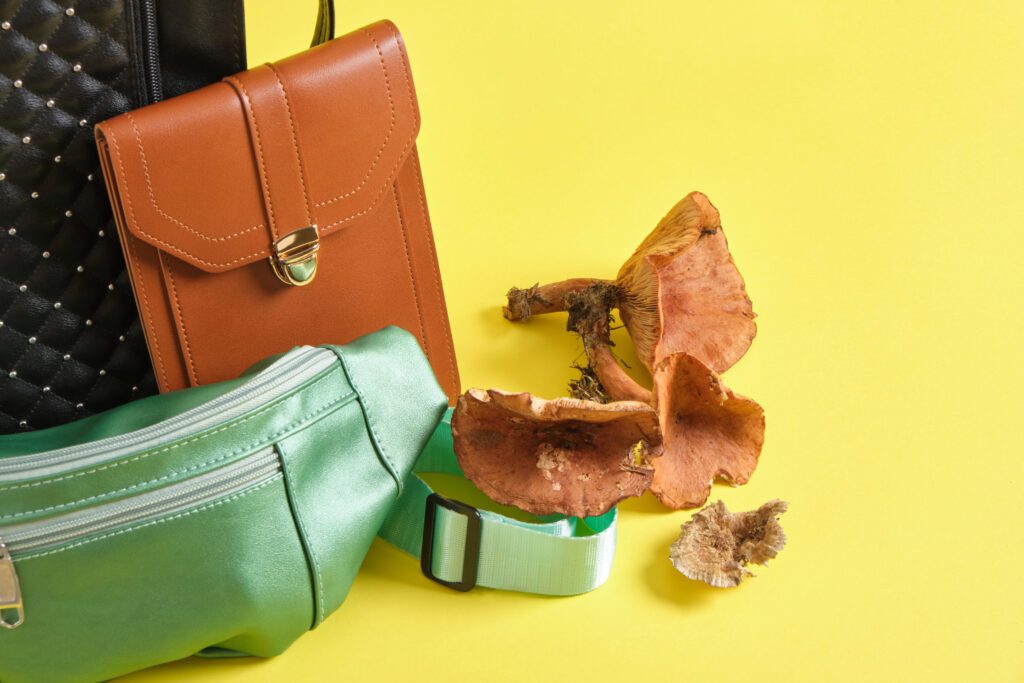
The fashion industry has witnessed an increasing inclination towards eco-consciousness and sustainability in recent years. Many consumers are now seeking out products that align with their personal values—being more environmentally friendly—and paying a higher price for slow and ethically made fashion. Leather upholstery, clothes, and accessories are no exception, with many people opting for vegan alternatives.
However, while vegan leather may seem like a more ethical and sustainable alternative to traditional animal leather, the reality is not so straightforward. Read on to learn more.
Animal hide leather has a long history of use and is often desirable for its durability and strength. It is often very comfortable, long-lasting, and visually appealing. However, over the years the production has garnered criticism by both animal welfare activists and environmentalists.

The production of leather requires animal hide, first and foremost. The methods by which people keep and kill animals for their hide is criticised by many as cruel and inhumane. Keeping animals in captivity, particularly cattle, also has environmental drawbacks. A single cow can emit up to 100kg of methane each year and livestock collectively accounts for 10-15% of global greenhouse gas emissions.
The leather tanning process also requires hazardous chemical agents and large amounts of water, which together can cause harm to workers and pollute waterways. Calcium hydroxide and sulfuric acid are used in the preparation of hide, removing hair and discoloration, and chromium salts contribute to a uniform texture of the collagen fibres. Several steps of the tanning process may allow the emission of particulate matter, volatile organic compounds, or ammonia.
As the most common alternative to traditional leather, vegan leather usually refers to ‘pleather’ (plastic leather) or PU (polyurethane) leather. While plastic-based leather goods do not have the same cruel connotations as animal leather, the wider environmental impacts are not as clear cut.
Like other plastic products, pleather can take hundreds of years to degrade into smaller components, at which point they will break down into ubiquitous microplastics, getting everywhere from soil and clouds to water and blood. Industrial feedstocks for plastics are also harmful to the environment and to people. Over 99% of plastic products are made from oil, the extraction and refinement of which contributes hugely to global warming. Additionally, plastic leather requires the use of plasticising agents to ensure a smooth and supple texture. Many plastics use phthalates as a plasticiser which had been suspected of having endocrine disrupting effects.
The most common artificial leather is made of polyurethane—a family of polymers consisting of diisocyanates and polyols, which make up roughly 6% of all produced polymers globally. The second-most common plastic for leatherlike products is polyvinyl chloride (PVC). This is made from the toxic vinyl chloride monomer (which is non-toxic once polymerised) with a significant amount of phthalates added to make the material flexible. To make plastic leather, the polymer is laminated onto a base material, such as cotton, rayon, or polyester, and given a textured finish to look more like genuine leather.
While the social economics of fashion are rife with debates about ethics, environment, and affordability, bio-based leather alternatives are being developed at a rapid pace to counter the drawbacks of both plastic and animal leather products.

Mushroom leather, also known as "mycelium leather," is made from the root structure of mushrooms. The mycelium—a complex of proteins, chitin, and cellulose—is grown on a substrate of agricultural waste, such as corn stalks or sawdust, and then harvested, cleaned, and processed into a leather-like material. The resulting material is soft, pliable, and durable, and it can be dyed and textured to mimic the look and feel of traditional leather.
Other alternatives to leather have been made from paper pulp, cork, hemp, and even pineapple! While animal leather gets its structure from protein-rich collagen and pleather is created from plastic polymers (often sourced from fossil fuels), these plant-based leather alternatives are made up of cellulose. Cellulosic fibres, composed of complex sugar molecules, are much more easily broken down in compost or in landfill, and can be disposed of in a fraction of the time it takes for plastic materials to decompose. This makes them both ethically and environmentally superior to animal and plastic leather.
If you want to know more about the environmental and health effects of chemicals, or how to minimise risk while working with chemicals, we’re here to help. We have tools to help you with mandatory reporting, as well as generating SDS and Risk Assessments. We also have a library of webinars covering global safety regulations, software training, accredited courses, and labelling requirements. For more information, contact us today!
Sources: